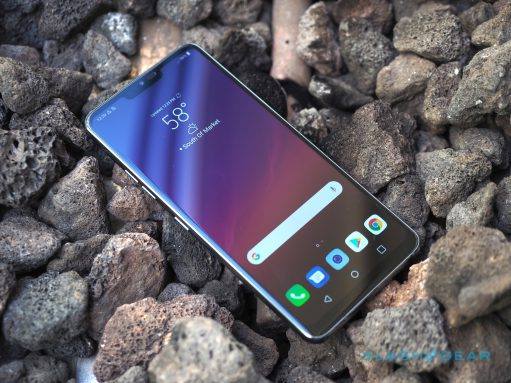Doing a factory reset on the Nexus 6P can iron out a lot of random issues and glitches so let me show you the step by step process about how this is done.
There are many reasons why someone might want to do a factory reset on their smartphone. I like to do one right when I pull the phone out of the box because of the possibility of hiccups happening during the initial installation process at the factory. It’s just a precaution because I’ve had times where I have set everything up only to find that I have poor battery life due to one of these glitches.
Among battery life issues, things like performance, overheating, WiFi/Bluetooth connectivity and application force closes can all be resolved by a simple factory reset.
Sadly, doing a factory reset will wipe off all of your personal data from the Nexus 6P. Doing this will make it as if you had just pulled the device from the box. Meaning, when it reboots, you will be greeted with the Android activation screen and asked to set everything back up again. This also means that any photos, contacts, applications, music, and anything else you have put on the Nexus 6P since you started using it will be gone.
Thankfully, Google will back up things like your contacts. . .unless you strictly told them not to. So all of that data will be restored once you activate your Google account on the phone again. If you use services like Google Photos(or any other cloud based backup service) for backing up your photos then those can easily be restored once you activate the Nexus 6P again. There’s also a new application backup feature that Google has implemented in Android 6.0 Marshmallow. The thing is, if the application developer hasn’t targeted the app for Marshmallow then these backups won’t be made.
There are two types of factory reset methods that you could do. One of these is called a Soft Factory Reset and the other is called a Hard Factory Reset. Nether is better than the other and both will result in the same type of data reset happening. We only have two options here because there are times when we cannot boot into Android so the Hard Factory Reset method is a life saver.
Nexus 6P Soft Factory Reset
- Open the Settings App on the Nexus 6P
- Then Scroll Down and Tap on the ‘Backup & Reset’ Option
- From Here, Tap on the ‘Reset Phone’ Button At the Bottom
- Tap on the ‘Erase Everything’ Button
- And Then Wait for the Nexus 6P to Reboot and Perform the Factory Reset
Nexus 6P Hard Factory Reset
- Turn Off the Nexus 6P
- Boot the Nexus 6P into Fastboot Mode
- Then Boot the Nexus 6P into Recovery Mode
- When in Recovery Mode, Press the Volume Down Button Until the ‘Wipe Data/Factory Reset’ Option is Highlighted
- When Highlighted, You Can Press the Power Button to Select This Option
- You’ll be Prompted to Confirm This Decision, So Highlight the ‘Yes – Delete All User Data’ Option
- Then Press the Power Button Again to Confirm the Factory Reset
- Wait Until the Factory Reset is Finished
- When Done, Make Sure the ‘Reboot System Now’ Option is Highlighted
- Then Press the Power Button to Select This Option and Reboot the Nexus 6P
Explanation
So here you can see there are two different methods do actually doing a factory reset. Both of these are the same, like I said, but there are two ways to access the same function. This is because sometimes an Android smartphone can run into a bootloop. If this happens, you’ll see the Nexus 6P start to boot up and then it will reboot itself and do it all over again. This will repeat itself(aka looping) and this normally happens because of an error during the boot up process. This is common if you have installed a modification that wasn’t compatible with your device(or if the modification was buggy).
So 9 times out of 10, I suggest to just do the Soft Factory Reset method for the Nexus 6P. If you can boot up into Android then the first option listed here is much quicker and easier to do so you might as well go for that option. If you cannot get into Android though, then you’ll have to boot the Nexus 6P into Fastboot Mode so you can then boot into Recovery Mode and then you can do the Hard Factory Reset that way. Again, they both do the same type of data reset so one is just as good as the other.
Issues like poor battery life, overheating, application force closes and the other issues mentioned earlier can sometimes be caused by some software bugs. This can happen at random, it can happen after accepting an OTA update and it can happen or it can happen when installing a modification that hasn’t been properly tested. These are just a few examples of how this can happen though because the Android OS is so complex that there are dozens of reasons why a factory reset might be needed. What we’re doing is wiping all of the user data from the phone and starting over fresh.
Another thing that can help with these types of issues is wiping the cache partition on the Nexus 6P. It is always best to try this option first because it doesn’t touch your user data and it can sometimes resolve the issues mentioned here. However, if you have wiped the cache partition and you are still experiencing these bugs, then the next troubleshooting step is to do a factory reset.







In Nexus 5, doing factory reset via TWRP doesn’t wipe sdcard partition and only reset the system stuff. But I heard. in Nexus 6P, factory reset via even TWRP causes sdcard to be wiped. Can you please confirm or debunk?